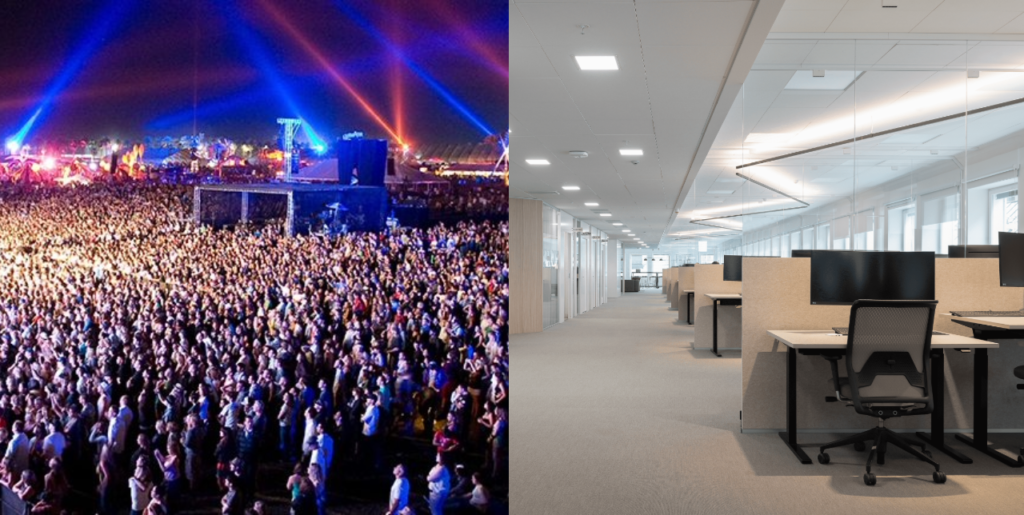Smart buildings #1 - smart buildings to the rescue
Smart buildings offer the entire building sector serious appeal, and for good reason. In the midst of the unprecedented growth of smart technologies, there is a unique window of opportunity for product owners to get ahead of the competition and super-charge an existing product business.
This is the first in a series of articles that will shed light on what you as a product manufacturer should know about industry trends and the driving forces behind smart buildings.
Building Internet of Things
The expressions “intelligent buildings” or “smart buildings” are a tad bit overused, suggesting that it has something to do with sensors, monitors, and dashboards. But the “smart” part is really their ability to reduce energy-waste, cut costs and promote productivity. So, in essence we build smart buildings to address environmental challenges, save money and get the enhanced lifestyles as a bonus. Technology is just the enabler. Having said that, Big Data, high-speed wireless connectivity, the cloud and IoT-enabled automation systems in buildings are somewhat a prerequisite to support all stakeholders bottom line as well as Mother Earth’s.
Point of no return
The world’s cities are already occupied by 4 billion people and by 2030 two thirds of the earth’s population will live in urban areas. Second only to fossil fuels, cities are the real culprits behind the amplified global warming. This development is deeply unsustainable both environmentally and economically. Clean, more habitable and resilient cities start with smart buildings. So, developing a truly networked infrastructure, where smart, green buildings can be fully realized, is undoubtedly an immediate global concern.
Sustainability is no longer a choice
Cities are speeding up the construction of smart buildings and retrofits of the existing building stock by partnering up with the private sector, the academia and innovative tech-startups. A strong motivator for this development is the EU Nearly-Zero Energy Building Directive. This new legislation requires all public buildings to be nearly-zero energy already this year to meet the EU’s targets to bring down CO2 emissions with 20% by 2020. The fast track to curb energy-waste has proven to be the nearly-zero energy building. A nearly-zero energy building is an environmentally friendly giant that produces the same amount of clean energy as it spends – and at that – in its own backyard.
Methods to support sustainable building practices
The BREEAM sustainability assessment method and the energy efficiency benchmarking tool LEED are developed to certify that a building delivers on all strict sustainability requirements from the get-go, from energy use and indoor environment to waste management and of course the overall environmental impacts of the building.
A sustainability certified building will also make a smart building’s performance comparable internationally which gives property owners a clear indication of how environmentally friendly their building is. The more sustainable, the better financial and environmental payoffs for building owners, tenants and facility managers.
Existing buildings will also get smarter
In the UK there is a commitment to halve all greenhouse gas emissions by 2025. But around 80% of the building stock that will exist in 2025 has already been built. This is more or less the case in the rest of the western world. Yet it’s not realistic to replace all outdated infrastructure, especially in older buildings that were not built with automation in mind. This is where retrofitting with IoT comes into play.
To retrofit existing building management systems with low-cost sensors connected to the Internet is an inexpensive way to start crunching the numbers without the need to sign up for a costly whole-system makeover. Standard systems for energy management, HVAC, access control, fire detection and lighting are the nearest shore. This system-by-system upgrade approach is increasingly adopted by building owners and facility managers according to research firm IHS.
So what about future proofing? Well, given that technology innovation is advancing in an unheard-of tempo it’s impossible to predict what lies ahead in just a few years. Just the same, we should be prepared. Even tough today’s smart technologies are state-of-the-art, they will surely be seen as antiquated compared to the technology that will be available in the future. So, to choose a wireless solution that at least can anticipate and adapt to what the future will bring is a clever move to safeguard the intelligent building systems’ lifespan over time.
Cybersecurity by Design
A major drawback on the path towards the promised land of connected buildings is cyberthreats. In a world where a smart lock (or any other connected device in a building) can initiate a cyberattack that cripple a whole building’s critical functions, it becomes mandatory to address cybersecurity risks. It’s important that digital, physical and cyber security is not an afterthought but is built in by design.
Data privacy
The General Data Protection Regulation (GDPR) goes into effect in May this year. It will impact what type of personal data we store in smart buildings. Making sure that individual tenants or office workers are informed that, and how, their data is used and get their consent stands in stark contrast to the tendency to collect data because it is useful for building operations or just interesting. It’s a no-brainer that all privacy question marks must be cleared up if smart buildings are going to reach their full potential.
The global market
It’s no understatement that there is a snowballing demand for clever networked solutions in the building sector, we see innovations pop up almost daily. Smart buildings are reputedly becoming the number one market for IoT-enabled products and devices according to Deloitte.
As per Navigant Research’s latest report the global smart buildings market is expected to grow from $3.6 billion in 2017 to $10.2 billion by 2026. Based on Market and Research’s recent report the global market for connected services and hardware will grow from $8.8Bn in 2016 to over $18.4Bn by 2021. IHS in turn predicts that the global building automation equipment marketplace will grow by 4 percent this year. Finally, the Memoori complete report on market sizing and opportunities for Smart Commercial buildings 2016-2021 indicates that unconnected BAS-market for energy and control systems will grow 7.2% CAGR with the strongest growth in lighting control.
Final words
Connected products are not just improving value creation, but are also shattering the boundaries of competition itself and creating whole new industries. For many manufacturing companies, smart products will push the underlying enigma to the surface; “What market am I competing in?”. Our next article will provide you with the answers that will make you hit the ground running! And – given that you as a manufacturer embrace the opportunities at hand, we would say – from now on you are in the smart, connected product market.
Read part 2 in in our series on smart buildings – the benefits of adding connectivity to your products
Get our Smart buildings guide:
– Trends, driving forces and how connectivity can add value to your product




